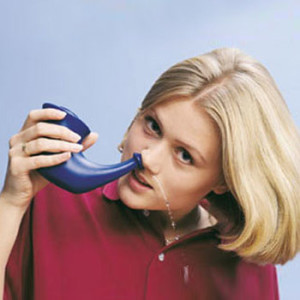 Although people do not notice various pollen allergens floating in the air, pollen is one of many airborne particles in our environment. One person will inhale two tablespoons of pollen a day.
Although people do not notice various pollen allergens floating in the air, pollen is one of many airborne particles in our environment. One person will inhale two tablespoons of pollen a day.
Pollen allergy, also known as hay fever (allergic rhinitis), is inflammation of the mucous membrane which lines the inner nose and sinuses.
Causes
Pollen allergy is usually recognized by seasons. If a person’s allergy symptoms are worse during the following seasons that usually means he is suffering from pollen allergies. Spring is when trees are pollinating. Early Summer is when grass and weeds are pollinating. Autumn is when weeds allergens are still potent.
When pollen is inhaled, tiny particles act as irritants; this causes mast cells in the nasal passages to release chemicals, such as histamines. As a result, allergic rhinitis produces inflammation, increased mucous secretion, and a multitude of other symptoms.
 Symptoms
Symptoms
Pollen allergy from trees, grass, or weeds, has a dramatic effect on the throat, the nose, the larynx (voice box), the trachea and the bronchioles. When pollens enter the nasal passage, hay fever symptoms transpire. The following are symptoms of pollen allergy (hay fever): Sneezing, runny or blocked nose, coughing and postnasal drip, itchy and watery eyes, itchy nose and throat, dark circles under eyes caused from increased blood flow near the sinuses, watery eyes, fatigue, swollen eyes caused by inflammation called Conjunctivitis.
Treatment
There is no cure for pollen allergies. However, there are medications to help relieve symptoms such as immunotherapy or injection treatments. Sometimes it may be necessary to combine treatments to get maximum relief from pollen allergy symptoms.
For seasonal allergies that cannot be avoided, medication can be prescribed by a physician. These medications include antihistamines, corticosteroids and cromolyn sodium. There are also effective antihistamines and decongestants that are available without a prescription.
Antihistamines counter the effects of histamines that the body’s immune system releases that contribute to the allergy symptoms. An antihistamine relieves sneezing, itching in the nose, throat and eyes and reduces nasal swelling and drainage. Unfortunately, there are side effects, such as drowsiness, loss of alertness and coordination. These side effects can be misinterpreted as behavior problems in children who are taking antihistamines for pollen allergy relief.
Over-the-counter nasal decongestants can be helpful in relieving blocked nasal passages. When nasal decongestant is taken, the blood vessels in nasal tissue are constricted, which lessens swelling and mucous production. Nasal decongestants can be found in nasal spray form, or taken orally. These nasal decongestants include ephedrine, phenyl-propanolamine hydrochloride and pseudoephedrine hydrochloride. Some people may experience side effects such as an increase in heart rate, raised blood pressure, or nervousness. These side effects should be reported to the administering physician.

Prevention
It is virtually impossible to avoid pollen allergies. When a person has pollen allergies to weeds, grass and tree pollen, that means ALL types everywhere. However, there are other ways to elude the offensive pollen:
- Outdoor pollen is at its highest level in the morning.
- Sunny, windy days have pollen in the air.
- When working outdoors, wear a face mask designed to block pollen from entering nasal passage.
- Escape pollinated periods with a vacation where pollen is minimal, such as a beach resort.
- Air filter devices made of fiberglass or electrically charges plates are effect to use for the home’s heating and cooling system.
These methods can help minimize pollen allergy symptoms.
Related Articles
